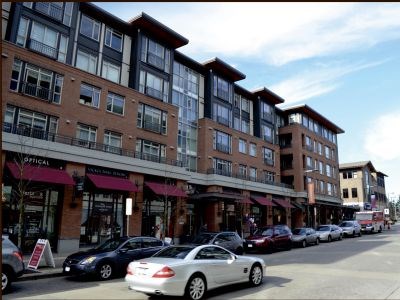The province announced March 20 it will review proposed changes to the Ontario Building Code that would allow the construction of six-storey wood-frame buildings.
Under the changes, mid-rise wood-frame construction would be permitted for residential buildings and office buildings. The Ministry of Municipal Affairs and Housing is considering the following changes:
-to facilitate mixed uses, certain other building uses would be permitted on the first and second floors of mid-rise wood frame residential or office buildings, including restaurants, stores and medical offices;
-limits on building height to top floor (18 metres from first floor, 20 metres from fire access route);
-limits on building area to 25 per cent of that of residential non-combustible buildings and -42 per cent of office non-combustible buildings;
-minimum building perimeter access requirements;
-improved fire service access to the building;
-non-combustible stairwells with a fire rating of at least 1.5 hours;
-enhanced automatic sprinklering, beyond the NFPA 13 standard for large buildings;
-enhancements include sprinklering of balconies, decks and certain types of concealed spaces;
-increased fire protection in concealed spaces;
-non-combustible or combustion resistant exterior cladding; and
-combustion-resistant roof cladding.
Currently, the building code only allows for the construction of wood-frame buildings up to four storeys. British Columbia amended its building code to allow their construction in 2009, while other jurisdictions such as Sweden, the United Kingdom and Australia permit wood mid-rises of six storeys and taller.
Arguments for the use of the wood in mid-rise buildings include flexibility in building design, environmentally friendly buildings and construction, housing affordability, and adding value to the forestry industry by using wood-based products.
Advocates of wood-frame construction were quick to voice their support for the announcement.
“We are very happy with the code changes announced today,” said Marianne Berube, executive director of Ontario Wood WORKS!, in a news release. “These changes offer new opportunities to meeting urban densification plans and create more affordable housing. We look forward to the innovative niche market for mid-rise buildings that will be created by these changes.”
Support also came from the Ontario Home Builders’ Association, the Building Industry and Land Development Association, and the Residential Construction Council of Ontario.
“Communities across Ontario, from London to North Bay, will all benefit from the housing, rental and office opportunities that this provincial proposal provides,” said Joe Vaccaro, CEO of the Ontario Home Builders’ Association, in a release. We look forward to seeing Ontario projects this year.”
Nipissing MPP Vic Fedeli had, on two previous occasions, introduced a private member’s bill to change the legislation. During the second attempt last fall, his Bill 13 passed second reading.
“Despite government members originally voting against my bill at committee, it’s very rewarding to see all of this work is now paying off,” Fedeli said in a statement. “There’s no doubt this will provide a boost to Northern Ontario’s forestry industry and help create jobs.”
Not in favour of the changes is the Cement Association of Canada, which has expressed its concern about safety related to wood-frame mid-rise buildings. Following a December fire that gutted a wood-frame student residence building in Kingston, the association called for greater fire safety provisions in the National Building Code of Canada.
“This fire is yet another example of the risks inherent to wood construction, especially during the construction phase,” Michael McSweeney, the association’s president and CEO, said at the time. “We are very concerned about the fire safety risk to Canadians, including our first responders. Our building codes shouldn’t set just he bare minimum standard, but strive to achieve the gold standard. Canadians should expect nothing less.”
People have 45 days to comment on the changes. The deadline to submit feedback is May 4.
www.ontariocanada.com/registry/view.do?postingId=15462&language=en




